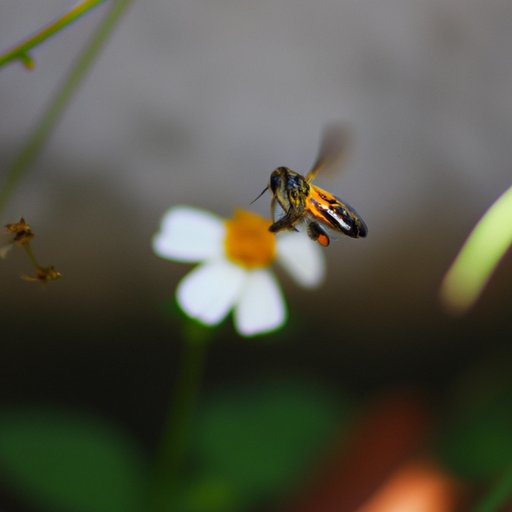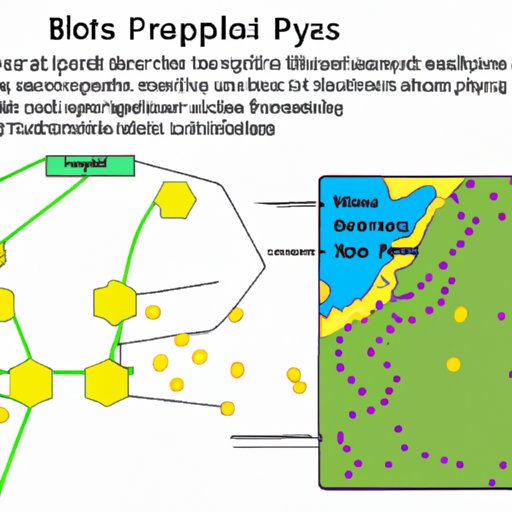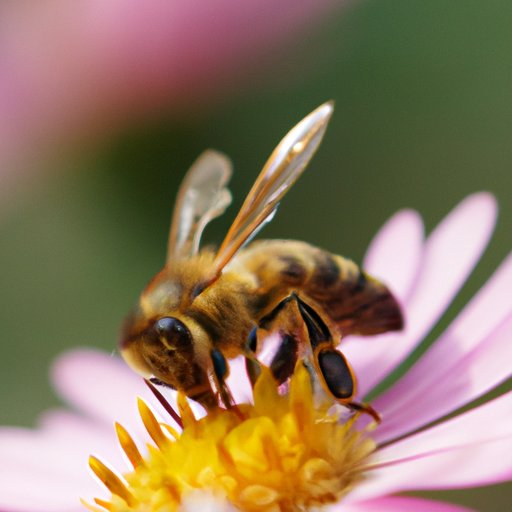Introduction
Bees are one of the most important species in the world. They play a vital role in pollinating plants, which makes them essential to the health of ecosystems and the global food supply. But have you ever wondered how far do bees travel? To understand the full scope of their impact, it’s important to look at how they migrate and how that affects their ability to pollinate.
Bee migration is the process by which bees move from one area to another in search of food sources and more favorable environmental conditions. While some bees are capable of traveling long distances, others stay within a relatively small area. Understanding the migratory habits of bees can help us better understand their importance to the environment and how we can protect them.
Examining the Foraging Habits of Bees
Bees are known for their industriousness and hard work. They collect nectar and pollen from flowers and use it to make honey and other products. But did you know that not all bees forage in the same way? Depending on their species, bees may employ different strategies to find food sources.
There are two main types of foraging bees: solitary bees and social bees. Solitary bees are usually non-aggressive and often nest alone. They tend to fly short distances in search of food. Social bees, on the other hand, live in colonies and cooperate to find food sources. These bees can travel farther than solitary bees in search of resources.
The type of foraging bee has an effect on how far they travel. But there are also other factors that can influence bee foraging patterns. Weather, terrain, and even human activity can affect where and how far bees go in search of food.

Mapping the Distance Bees Travel for Pollination
Pollination is a critical part of the natural cycle of life. Without it, many plants would not be able to reproduce and spread their seeds. Bees are one of the most important pollinators of plants, and their movements can have a major impact on the success of crops.
In general, bees tend to stay close to their hives or nests when collecting nectar and pollen. Studies have shown that the typical range of a bee’s foraging flight is between 0.3 and 4 miles. However, this distance can vary based on the type of bee, the quality of the environment, and the availability of food sources.
Geography is another factor that influences bee migration. In some areas, such as deserts, bees may have to travel farther to find food sources due to the lack of vegetation. On the other hand, in areas with abundant vegetation, bees can stay closer to their nests.

Exploring the Impact of Geographic Location on Bee Migration
The terrain of an area can also affect bee migration. In mountainous regions, for example, bees may have to travel further to find food sources due to the steep inclines and declines. In flatlands, however, bees can cover much larger areas without having to expend much energy.
Urbanization is another factor that can influence bee migration. As cities expand, they can reduce the amount of available habitat for bees. This can limit the number of habitats in which bees can thrive and reduce their ability to migrate long distances.
Assessing the Relationship Between Bee Movement and Climate Change
Climate change is a major threat to bee populations worldwide. Rising temperatures can cause the flowering seasons of plants to shift, which can disrupt the timing of bee migration and reduce the availability of food sources. In addition, extreme weather events such as floods and droughts can damage bee habitats and make it difficult for bees to find food.
To reduce the impact of climate change on bee migration, it’s important to take steps to conserve and restore bee habitats. Planting native flowers and shrubs can provide food sources for bees, while creating buffer zones around bee habitats can help protect them from extreme weather events.
Investigating How Far Bees Fly to Collect Nectar and Pollen
Bees need both nectar and pollen to survive. Nectar provides them with energy, while pollen is a source of protein and other nutrients. Different types of bees may collect different types of nectar and pollen, depending on their species and the type of plant they visit.
Studies have found that while some bees may only fly a few hundred feet in search of nectar and pollen, others may travel up to 8 miles or more. The exact distance depends on the type of bee, the quality of the environment, and the availability of food sources.

Analyzing the Role of Flower Availability in Bee Migration Patterns
Flower availability is another factor that can influence bee migration. When flowers are plentiful, bees will stay in an area longer. But when there are fewer flowers, they may have to travel farther in search of food. This can have a major impact on the success of pollination efforts in a given area.
In addition, flower availability can also affect the diversity of bees in an area. When there is a variety of flowers available, different species of bees may be attracted to the area and increase the overall diversity of pollinators.
Conclusion
Bees play a critical role in pollination, and understanding how far bees travel is essential for protecting them and their habitats. Different types of bees may travel different distances in search of food, and environmental factors such as geography, terrain, and climate change can all influence bee migration patterns.
In addition, flower availability can also have an impact on bee migration. When there is a variety of flowers available, different species of bees may be attracted to an area, increasing the chances of successful pollination. By understanding how far do bees travel and the factors that influence their movements, we can better protect them and ensure their continued success.
(Note: Is this article not meeting your expectations? Do you have knowledge or insights to share? Unlock new opportunities and expand your reach by joining our authors team. Click Registration to join us and share your expertise with our readers.)
